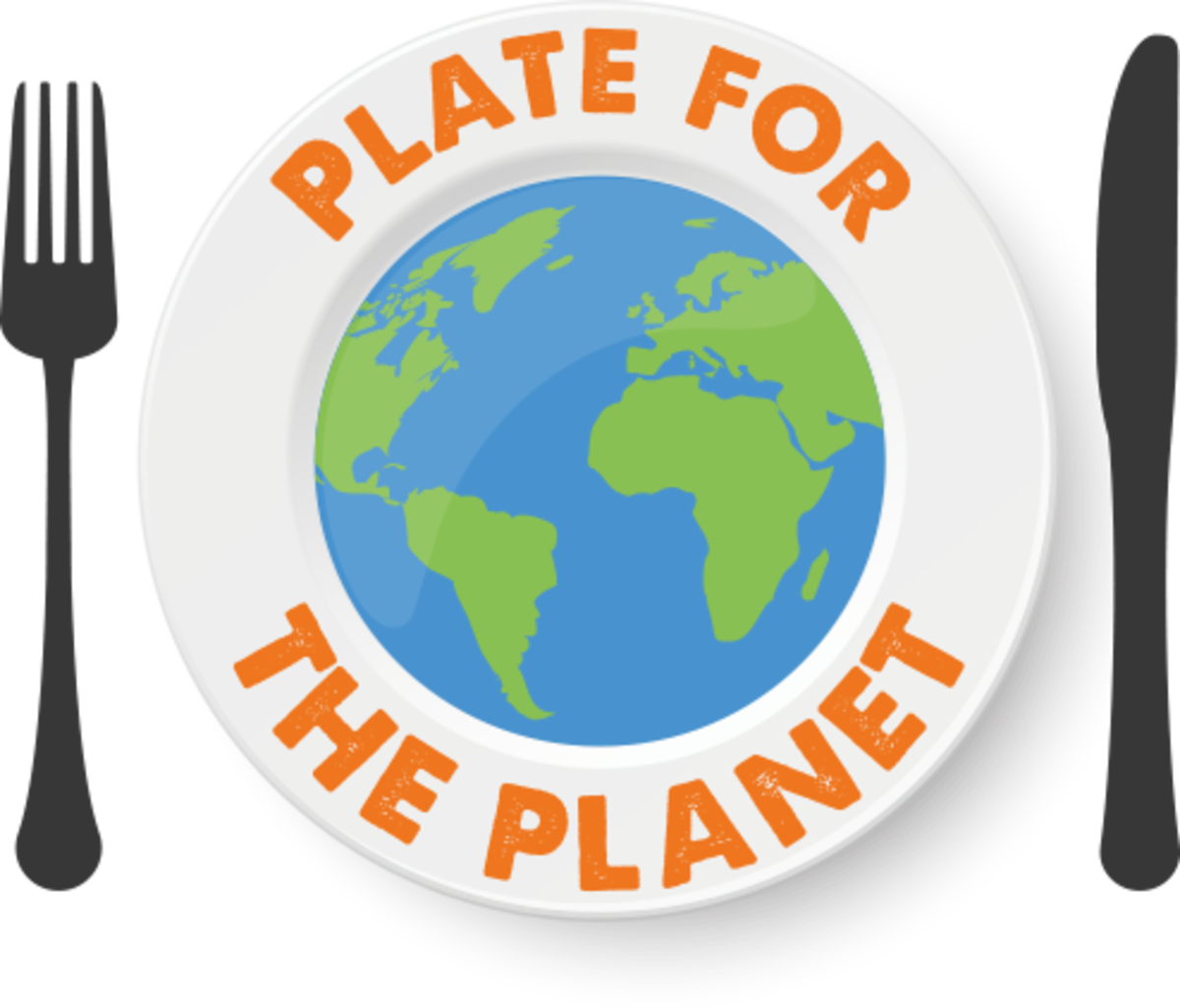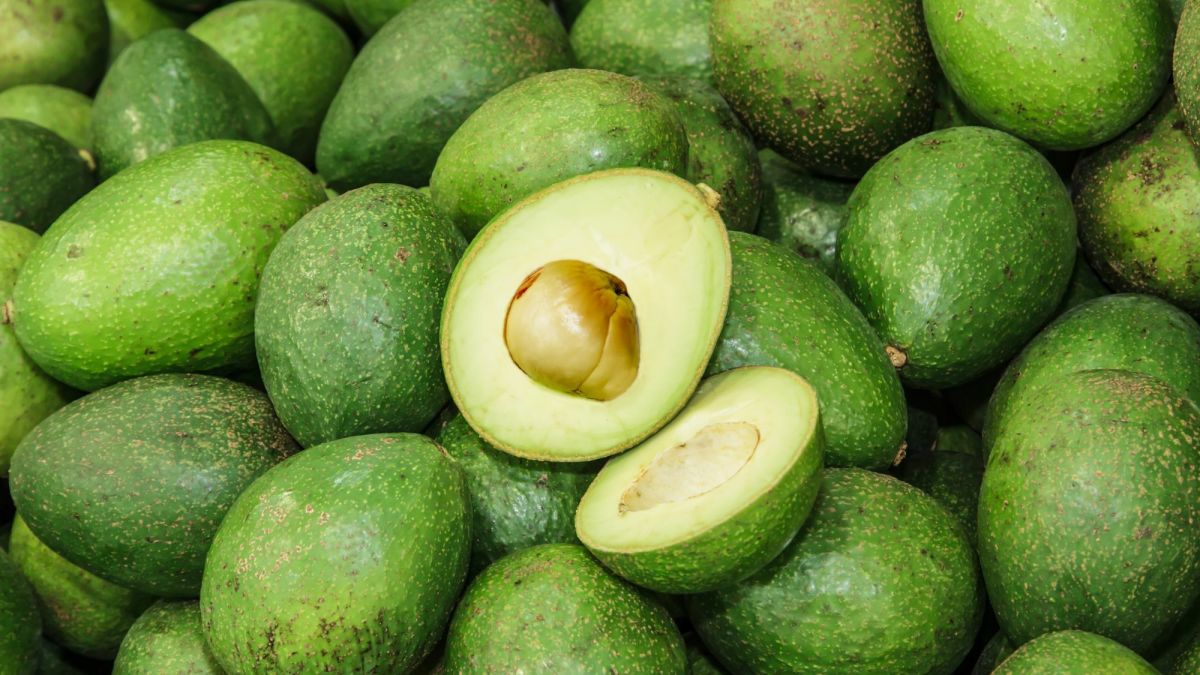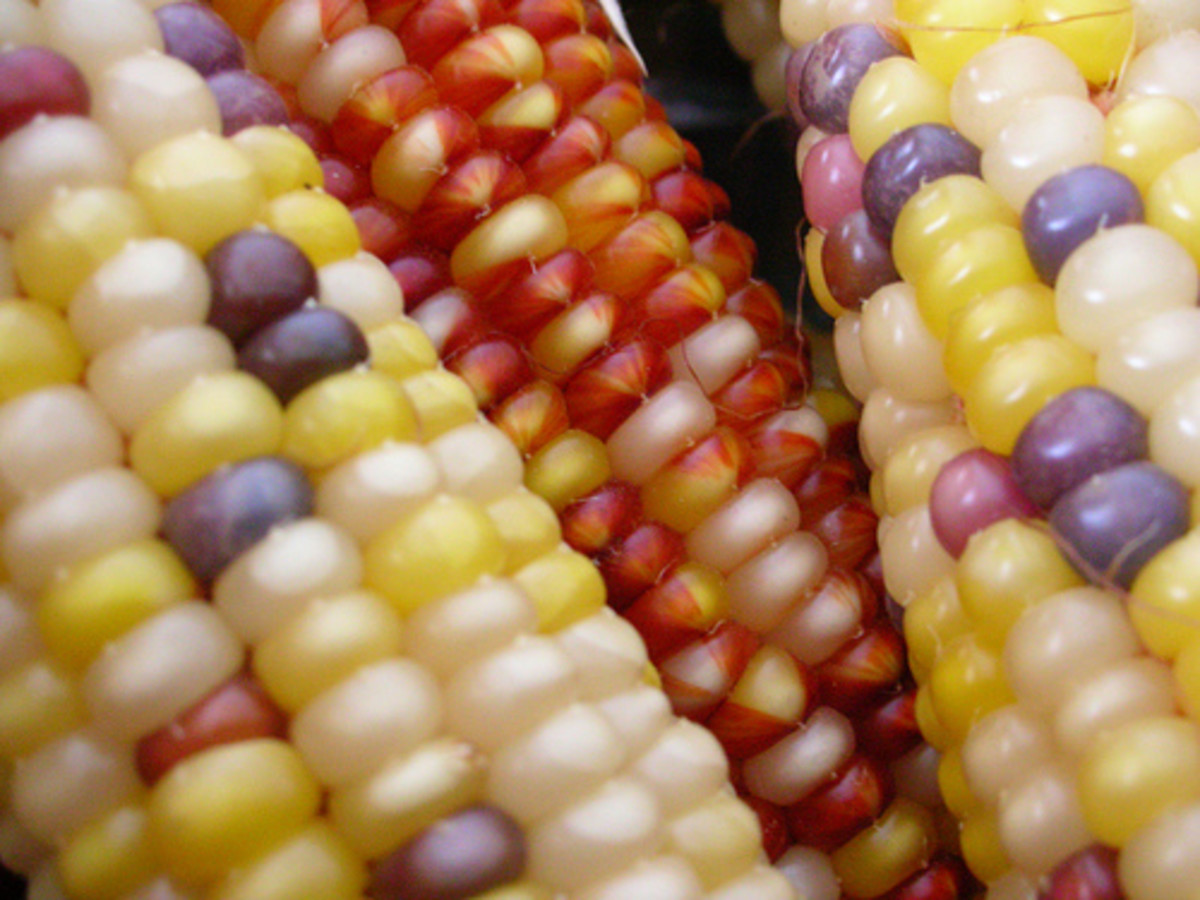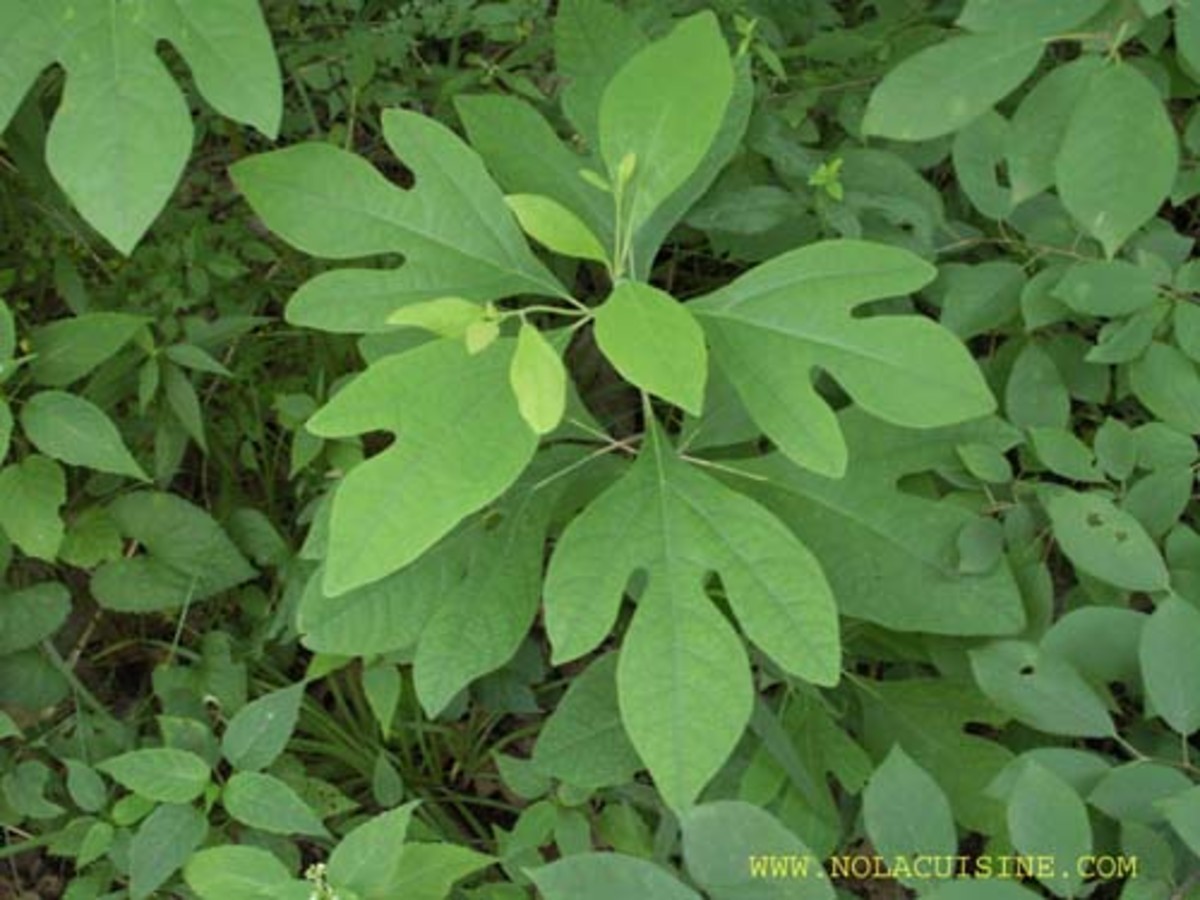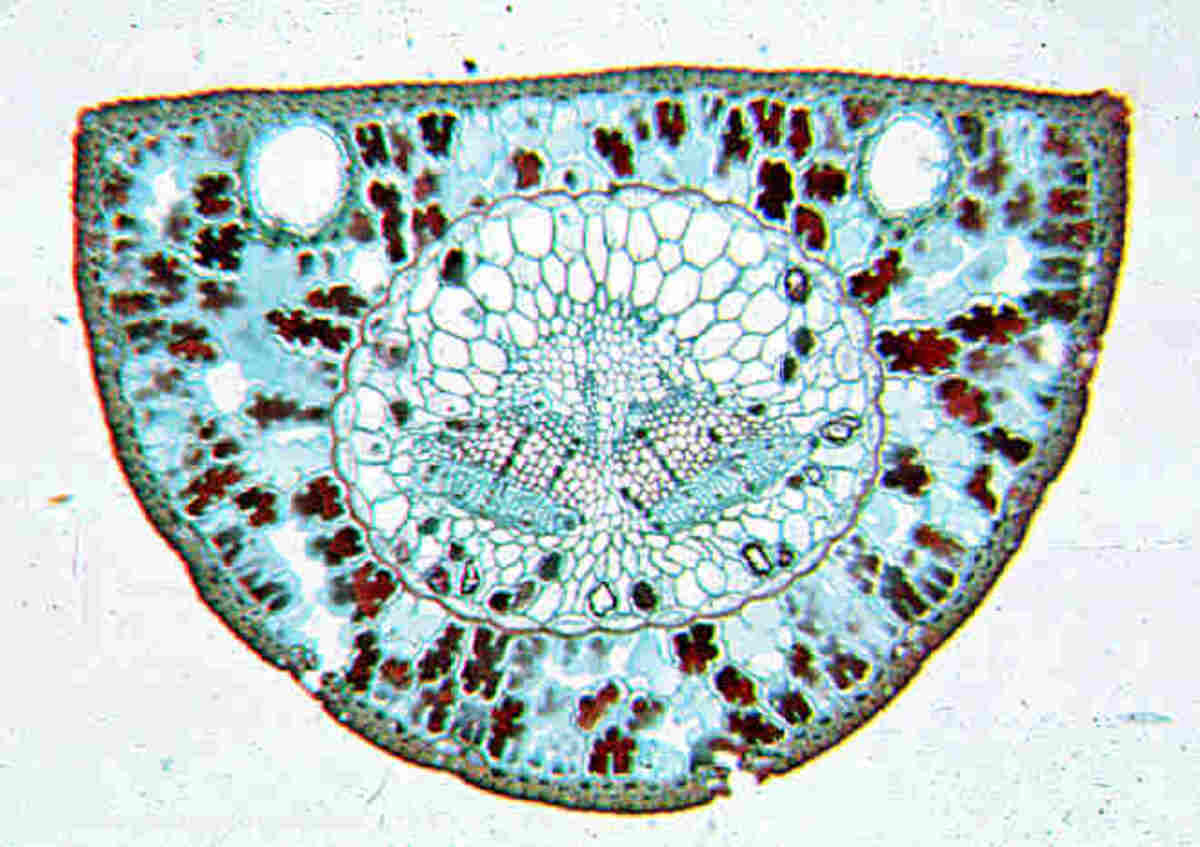The Domestication of Corn: Teosinte Branched 1 (tb1)
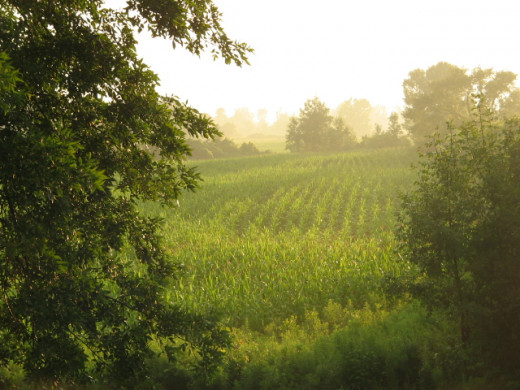
Some of the historically important factors and basic differences between teosinte and corn were covered in Corn Domestication and Importance. In this hub, one of the genes that was selected by humans will be looked at for a further, more in-depth view of corn domestication. Teosinte branched 1 (tb1) will be the focal point of this hub.
The modification of this gene brought about a larger ear that could hold more seeds. In agriculturally based societies this proves to be very useful. Less seeds have to be planted in order to produce the same amount of crop yield. This in turn allows the farmer to produce more with the equal amount of effort needed to produce its wild ancestor.
Ear Structure
The kernels (seeds) of corn are wrapped around a core or axis point (the cob). However, if one were to compare the teosinte plant and an ear of corn, they would appear to be nothing alike.
Teosinte kernels (wild ancestor of corn) are attached linearly to the plant. There are very few kernels present on a single teosinte plant and the few that are present are encased in a stony shell. The stony casing proved to be vital in the development of the corn cob.
Corn ears can produce 500 or more kernels and the core is distinctively larger than their wild ancestor. Well, as it turns out, some of the genetically mutated plants humans selected for against teosinte actually took the stony casing, peeled it back and formed the 3-dimensional axis.
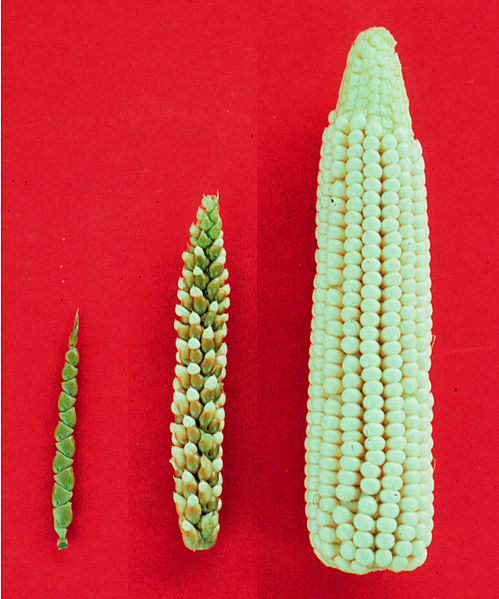
Teosinte Branched 1 (tb1)
Teosinte Branched 1 (tb1) is a plant architecture mutant of maize. It controls organ growth in maize and teosinte and gives the plant its shape. It has been found that, “tb1 genes code for structurally related proteins implicated in key morphological traits” (Coen et al. 1999). It is a part of the TCP-domain family, which act as transcriptional regulators.
This gene controls traits by reducing the regulator effects of organ growth. In both teosinte and in the male maize organs, this gene is repressed or turned off. Studies have shown that, “tb1 mRNA is found in axillary buds, axillary branches, husk leaf primordia, ear primordia, the lower floret primordium of each female spikelet, and stamen primordium of developing flowers of the maize ear” (Doebley 2004). So, maize domestication revolved around finding a strong tb1 expression in teosinte to promote the previously reduced organ growth needed to create the ear of corn, as we know it today.
This means that tb1 expression was vital in making that step from teosinte to maize. tb1 mutants (reduced or turned off expression) of maize grow basal branches (tillers) at lower nodes and the male inflorescences (tassels) at the upper nodes while fully expressed tb1 forms prevent the outgrowth of buds at lower nodes and promote female inflorescences (ear) at upper nodes (Coen et al. 1999). However, maize has a large genome when compared to rice, a widely studied plant. This large genome has many repetitive elements where little to nothing is known about “junk” DNA and how they contribute to phenotypic variation (Clark et al. 2006). Looking at the tb1 protein (TB1) and how it interacts with the DNA of maize and other proteins found within the plant may help with understanding how this plant has evolved.
As a protein, TB1 has not changed from teosinte to maize. This is supported by the fact that there are no fixed amino acid differences between the two plants (Doebley 2004). As a protein, what exactly does TB1 do?
This gene, along with its protein, is known to be class II TCP family member (Doebley 2004). TB1 is predicted to form a basic-Helix-Loop-Helix (bHLH) domain (Coen et al.1999). Studies done on rice have lead scientists to believe that TB1 acts similarly to proteins found in rice: PCF1 and PCF2. These proteins bind to, “promoter elements of the rice gene for the proliferating cell nuclear antigen (PCNA), a protein involved in DNA replication and cell cycle control” (Coen et al. 1999). This means that TB1 may act as a DNA-binder while interacting with other proteins through its bHLH domain (Coen et al. 1999). An activated expression of tb1, allowing TB1 to bind with DNA and interact with other proteins, may have lead to increased cell cycle replication and promote organ growth in the female inflorescence of maize.
Along with protein interaction, an allelic insertion due to natural selection may have also contributed to domestication by being selected by humans, increasing its frequency. In a recent study by Doebley, Ross-Ibarra, Studer and Zhao, they were able to find a selective sweep of a standing variation (Hopscotch tb1) that contributed and helped drive maize domestication.
The study conducted by Doebley and colleagues (2011) proved that a Hopscotch insertion took place 10,000 years before maize domestication. They were able to conclude that this Hopscotch insertion enhances tb1 transcription (Doebley et al. 2011; Tsiantis 2011). This increase in transcription would allow TB1 to reduce male organ growth while increasing female organ growth to give maize the look it has today.
This gene, tb1, was selected by humans for its capabilities in reducing male organ growth while promoting female organ growth. Natural selection inserted an allele that increased the transcription of this gene that produced a crop humans could easily consume. Human selection increased the frequency of which this variation of tb1 was found and furthered the domestication process of this crop.
(The video below was uploaded to Youtube by Proneural.)
Evolution of Corn
Conclusion
This paper looked at the tb1 gene and the affects it had on teosinte and how humans selected variations of this plant that brought about the domestication of maize. tb1 effects the growth rate of organs and suppresses male organ growth. Agriculturalists selected this gene for its promotion of female organ (ear) growth. The selection of this gene allowed for exposed kernels to be placed on a fully developed core that proved to be very suitable for human consumption.
Sources
2006 Clark, R., Doebley, J., Quijada, P., Wagler, T. A distant upstream enhancer at the maize domestication gene tb1 has pleiotropic effects on plant and inflorescent architecture. Nature Genetics 38(5).
2011 Doebley, J., Ross-Ibarra, J., Studer, A., Zhao, Q.Identification of a functional transposon insertion in the maize domestication gene tb1.Nature Genetics 43, 1160-1163.
2011 Tsiantis, M.A transposon in tb1 drove maize domestication.Nature Genetics 43, 1048-1050.
© hockey8mn, 2012. All Rights Reserved.

